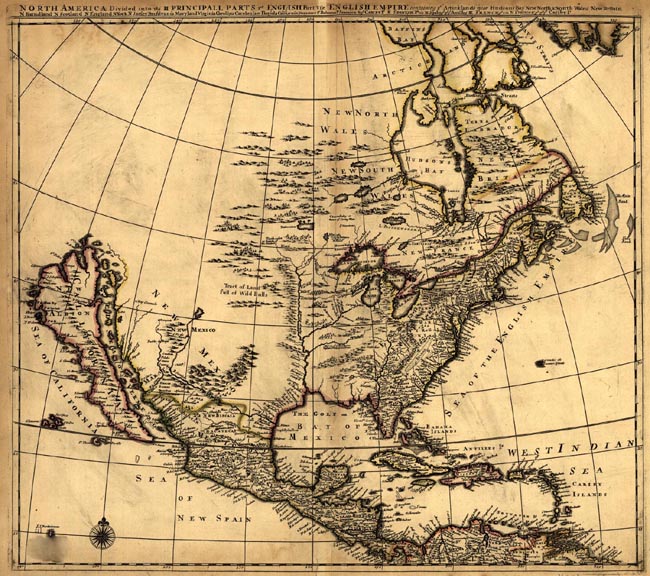Territorial Claims to Texas
![]()
This Site:
The History of Texas: Territorial ClaimsPrevious Section: Early Indian Inhabitants in Texas Map of the US in 1685, Showing Territory In Dispute Between France and SpainIn 1685 Texas was without a boundary and without a name. The Spaniards had not yet penetrated east of the Rio Grande, at least below the Paso del Norte; and La Salle was still endeavoring and hoping to establish the fact that he was in the vicinity of one of the mouths of the Mississippi. Texas to him and his people, and afterward his nation, was a part of Louisiana. He had discovered the mouth of the great river; the coast thence to the confines of Mexico; had planted a colony on one of her rivers; had stocked it with domestic animals, and planted fields with the seeds of husbandry. By all the rules, then, of national law, apart from the claim of the Indians, the country was French, and, if they chose to call it so, a part of Louisiana. The country was French by right of discovery. To Spain it was utterly unknown. The voyagers Ponce de Leon, Narvaez, De Ayllon, and De Soto, had never seen any of the vast extent of seacoast between Cape Florida and Soto de la Marina. The pretension and claim set up by Spain to this country, because she was in possession of these extreme points, are not supported by any of the rules of national law established by the governments of Europe in regard to their American discoveries. These rules were
Royal Exterminating Order of Philip IISpain, however, entertained a different view of the matter. This kingdom, formed under the auspices of Ferdinand and Isabella, with the powerful aid of Cardinal Ximenes, had grown to be one of the first nations of Europe. The discovery of America, the receipts from the mines, and the commerce of the colonies (amounting annually to over fifty millions of dollars), and, above all, the victories of Charles V., had imparted to the nation a spirit of ambition and love of dominion which knew no bounds. The sixteenth century closed with the gloomy and superstitious tyranny of Philip II., which had lasted for forty-two years. During his reign the greatness of Spain began to decline. He left his country bankrupt, and a prey to dissensions foreign and domestic. But her ambition was in nowise lessened. Pope Alexander VI., in 1494, had settled the dispute between the kings of Portugal and Castile concerning their claims in America, dividing their conquests by a line running from pole to pole, three hundred and seventy miles west of the Azores ; and, by his bull, confirmed to Spain the country west of that meridian. In pursuance of this claim, and the voyages of De Leon in 1512, De Ayllon in 1525, De Narvaez in 1527, and De Soto in 1538—although they had sailed only from Cape Florida to Cape Catorce, or perhaps as high up as the Soto de la Marina— Philip II. of Spain issued a royal order prohibiting all foreigners from entering the gulf of Mexico, or any of the territories lying around it, under pain of extermination! This order was repeated to the Spanish colonial viceroys and governors, requiring its strict observance and execution. Here, then, in the settlement by La Salle, under the orders of his sovereign, and the monstrous pretensions of Spain, is laid the foundation of a controversy, which, being transferred from one party to another, was finally and for ever closed by the treaty of Guadalupe Hidalgo, made between the United States and Mexico, on the 2d of February, 1848. The controversy between France and Spain over the ownership of Texas, together with the jealousy and constant watchfulness of the Spanish rulers in Mexico, will serve as a key to many of the events narrated in the next sections of this History of Texas WEB site. [See Next History of Texas Section: La Salle's Colony at Lavaca] |
![]()
|
Site Copyright © 2003-2018 Son of the South. For questions or comments, contact paul@sonofthesouth.net. |
|
|
|
Are you Scared and Confused? Click Here to read My Snake Story, a story of hope and encouragement, to help you face your fears. |
||
